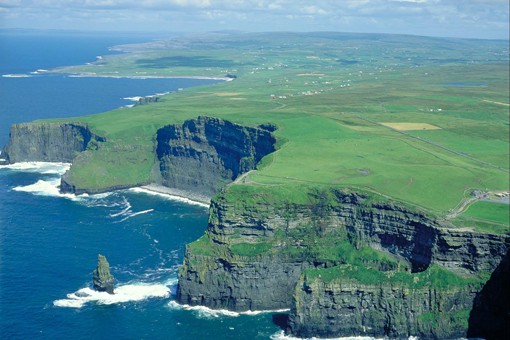 Holidays in Munster draw visitors to see Ireland’s highest peaks, sheer cliff faces and rare flora. Visitors visit Celtic monasteries, hear traditional Irish music, see Gaelic sports and smell the smoky aroma of turf close to Munster’s hotels.
Holidays in Munster draw visitors to see Ireland’s highest peaks, sheer cliff faces and rare flora. Visitors visit Celtic monasteries, hear traditional Irish music, see Gaelic sports and smell the smoky aroma of turf close to Munster’s hotels.The most south-westerly of Ireland’s four ancient provinces, Munster is divided into six counties. County Cork is home to medieval coastal towns like Kinsale and long finger-like peninsulas. Visitors tour the Ring of Kerry peninsula for unspoilt mountain views, forest parks and pretty coastal villages. The River Shannon spills into the sea between Limerick and Clare, and to the north is the Burren limestone plateau. Inland, Tipperary is characterised by monastic sites like the Rock of Cashel, and Waterford, to the east, is renowned for its crystal glass.
Holidays in Munster’s largest county, Cork, often start with its capital, Cork City, where Irish art, markets and local stout keep visitors occupied. A short distance away, the Cobh Heritage Centre explores the emotional journey made by millions of Irish emigrants. Along the county’s rugged coastline, Bantry Bay is where the French navy came to aid the rebellious United Irishmen in 1796. Inland, the Ballyhoura Mountains provide a breath of fresh air for hikers, bikers and adventure seekers with views across forests towards Tipperary and Limerick.
With Ireland's highest mountains, Carrauntoohil and Mount Brandon, and its most westerly point and highest pass on the Dingle Peninsula, County Kerry is a favourite choice to book Munster hotels. You can opt for gentle, woodland walks in Killarney National Park, home to stags, red squirrels and birds of prey. Drive along the 100-mile Ring of Kerry circuit, a craggy coastal route that passes Derrynane House. It was home to 19th-century political leader Daniel O’Connell, known as the Liberator.
Set on the Shannon riverside, county capital Limerick City is guarded by 13th- century Norman King John’s Castle. Visitors also come to see the Hunt Museum’s fine art collection, including works by Picasso and Gauguin. North- east pretty Irish villages like Castleconnell overlook the Shannon, and westwards the Foynes Flying Boat Museum harks back to a golden age in Irish aviation. To the south lies Lough Gur, an important archaeological site with dolmens and stone circles close by.
Marvel at the views over the sheer Cliffs of Moher, but keep a safe distance as Atlantic wind and waves crash against the rocks. Northwards the Burren karst landscape is home to dozens of megalithic tombs. You can also find most of Ireland’s flora growing between the limestone slabs, while offshore is favoured by dolphins. Back on dry land, Bunratty Castle & Folk Park provides an insight into 19th-century Irish life with living history enactors adding to the experience.
Visitors come to County Tipperary’s Rock of Cashel, ancient seat of the kings of Munster, to explore its 12th and 13th-century remains. Further south is vast Cahir Castle, a well-preserved 13th-century stronghold. Sports fans might prefer to see a hurling match in Thurles, home of Gaelic sports. Alternatively, head north to sail on Lough Derg or south for County Waterford’s best surfing in Tramore. For something special, you can buy crystal glass at the Waterford Crystal Visitor Centre.